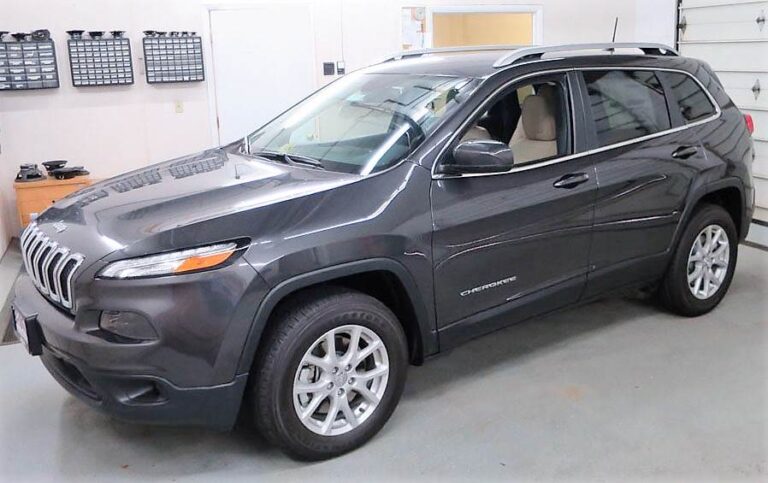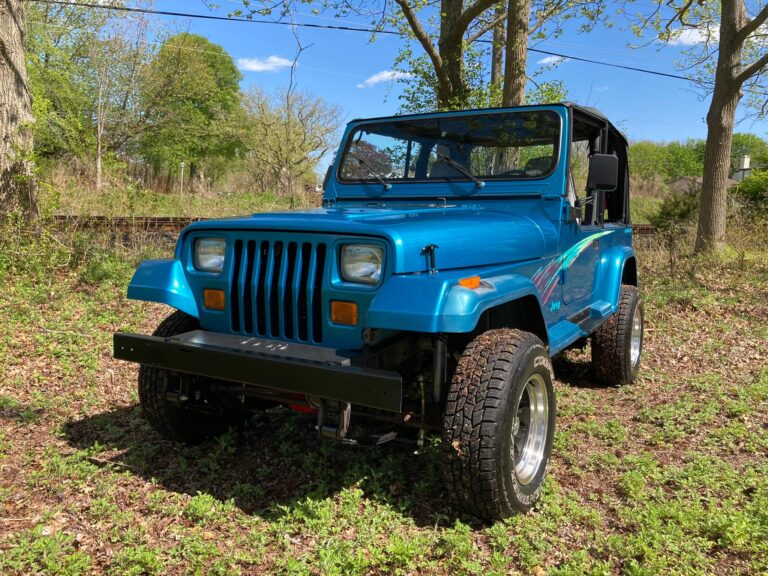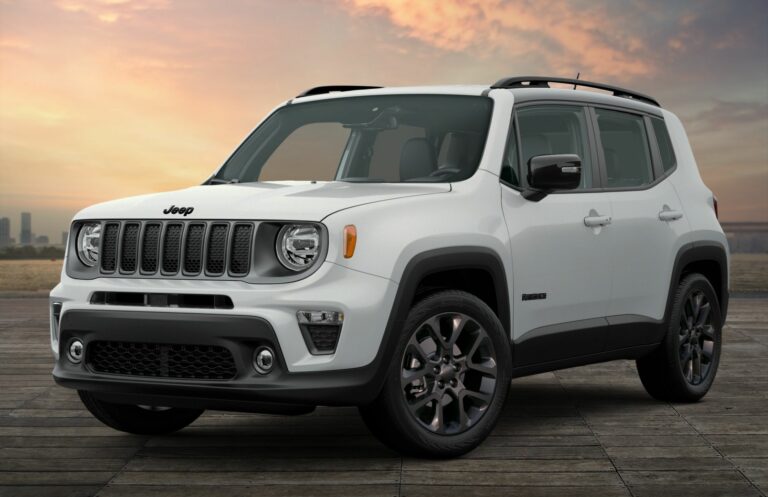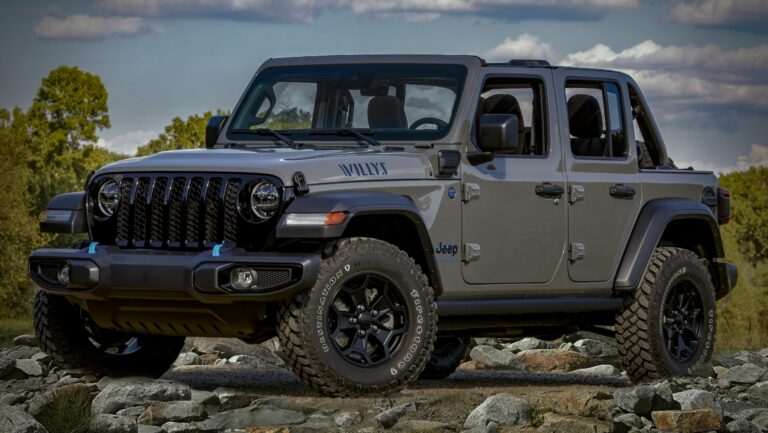Jeep JK Front Dana 44 For Sale: Your Ultimate Guide to an Off-Road Upgrade
Jeep JK Front Dana 44 For Sale: Your Ultimate Guide to an Off-Road Upgrade jeeps.truckstrend.com
For any Jeep Wrangler JK owner, the pursuit of enhanced off-road capability often leads to one critical component: the front axle. While the factory Dana 30 found in Sport and Sahara models serves well for daily driving and light trails, serious off-road enthusiasts and those running larger tires quickly realize its limitations. This is where the venerable Dana 44 steps in, offering a significant leap in strength, durability, and performance. The quest for a "Jeep JK Front Dana 44 for sale" is a common journey for many, signaling a desire to transform their JK into a more formidable trail machine.
This comprehensive guide will delve into everything you need to know about acquiring a front Dana 44 for your Jeep JK (model years 2007-2018). From understanding its benefits and different types available, to crucial buying considerations, installation insights, and a detailed price breakdown, we aim to equip you with the knowledge necessary to make an informed and successful upgrade.
Jeep JK Front Dana 44 For Sale: Your Ultimate Guide to an Off-Road Upgrade
Understanding the JK Dana 44: A Foundation for Off-Road Prowess
The Dana 44 axle is a well-respected name in the off-road community, known for its robust design and ability to withstand the rigors of challenging terrain. For the Jeep JK, a front Dana 44 offers a substantial upgrade over the standard Dana 30 in several key areas:
- Ring and Pinion Gear Size: The Dana 44 features a larger ring gear (8.5 inches vs. 7.125 inches for the Dana 30), allowing for stronger gearing and better power transfer, especially with larger tires.
- Axle Tube Diameter and Thickness: Dana 44 housings typically boast thicker and larger diameter axle tubes, significantly reducing the risk of bending or breaking under stress.
- Differential Strength: The internal components of the Dana 44 differential are designed for greater load-bearing capacity.
- Locking Differential Capability: While some Dana 30s can be modified for lockers, the factory Rubicon Dana 44 comes standard with an electronic locking differential (e-locker), a crucial feature for maximizing traction in challenging situations.

Essentially, upgrading to a Dana 44 front axle means installing a stronger foundation that can handle more abuse, larger tires, and more aggressive off-road driving without fear of catastrophic failure. It’s an investment in your Jeep’s longevity and your confidence on the trail.
Benefits of Upgrading to a Dana 44 Front Axle
The decision to seek a Jeep JK Front Dana 44 for sale isn’t just about replacing a part; it’s about unlocking a new level of performance and peace of mind. Here are the primary benefits:
![]()
- Increased Strength and Durability: This is the most significant advantage. A Dana 44 is inherently stronger than a Dana 30, meaning it’s less prone to bending axle tubes, breaking axle shafts, or damaging differential components when tackling obstacles or running larger tires.
- Support for Larger Tires: If you plan on running 35-inch tires or larger (e.g., 37s, 40s), a Dana 44 is highly recommended, if not essential. The stronger axle can better handle the increased rotational mass and leverage exerted by bigger tires.
- Enhanced Off-Road Capability: With a stronger axle, you can confidently engage in more aggressive off-roading, knowing your front end can take the punishment. Many Dana 44s come with or are easily upgradable to locking differentials, providing unparalleled traction in low-traction scenarios like rock crawling or deep mud.
- Wider Range of Gearing Options: While both axles can be re-geared, the Dana 44’s larger ring and pinion allow for a broader range of robust gearing choices, enabling you to perfectly match your engine’s power band with your tire size for optimal performance on and off-road.
- Improved Resale Value: A Jeep JK with a Dana 44 front axle (especially an aftermarket heavy-duty unit) is often more appealing to serious off-road buyers, potentially increasing its resale value.

Types of JK Front Dana 44 Axles for Sale
When searching for a "Jeep JK Front Dana 44 for sale," you’ll encounter several categories, each with its own advantages and considerations:
-
Used OEM Rubicon Dana 44:
- Description: These are genuine Dana 44 front axles pulled from Jeep Wrangler JK Rubicon models. They typically come with the electronic locker, 4.10 gearing (or occasionally 3.73), and stock axle shafts.
- Pros: Generally the most affordable option for a true Dana 44 upgrade, direct bolt-in fit for any JK, includes factory locker.
- Cons: Condition can vary greatly (wear, mileage, potential bends), may require re-gearing to match your rear axle, stock Rubicon 44s are still limited in strength for very large tires (37"+).
- Ideal for: Budget-conscious upgrades, running 35-37 inch tires, replacing a broken Dana 30.
-
New OEM Rubicon Dana 44:
- Description: Brand new, factory-spec Dana 44 axles available through dealerships or Mopar parts suppliers.
- Pros: Guaranteed new condition, direct bolt-in, factory warranty.
- Cons: Very expensive, still has the same strength limitations as a used OEM Rubicon 44.
- Ideal for: Restorations, those who want brand new OEM parts without considering aftermarket.
-
Aftermarket Heavy-Duty Dana 44 (Built Axles):
- Description: These are complete, purpose-built Dana 44 axles from reputable aftermarket manufacturers like Dynatrac, Currie Enterprises, TeraFlex, G2 Axle & Gear, and Spidertrax. They feature significantly thicker axle tubes, stronger knuckles, enhanced steering geometry, chromoly axle shafts, and often come with your choice of gear ratio and locking differential.
- Pros: Dramatically increased strength and durability, designed for extreme off-roading and very large tires (37-40+ inches), customizability (gearing, lockers, width), often come with improved caster for better road manners on lifted JKs.
- Cons: Most expensive option by a significant margin.
- Ideal for: Hardcore rock crawling, running 37-40+ inch tires, those seeking the ultimate in reliability and performance.
-
Aftermarket "Bare" Dana 44 Housings:
- Description: Just the empty axle housing from an aftermarket manufacturer. You then add your own differential, gears, lockers, axle shafts, and knuckles.
- Pros: Allows for ultimate customization of internal components, potentially more cost-effective if you have existing components or want to build it yourself.
- Cons: Requires significant additional parts and assembly, can be complex if not experienced.
- Ideal for: DIY enthusiasts, those who want to choose every component, or incrementally build their axle.
Key Considerations When Buying a JK Front Dana 44
Navigating the market for a Jeep JK Front Dana 44 for sale requires careful consideration of several factors to ensure you get the right axle for your needs and budget.
- Budget: This is paramount. Used OEM axles can range from $1,000 to $3,000+, while new OEM can be $4,000-$6,000+. Aftermarket built axles start around $6,000 and can easily exceed $10,000-$15,000 depending on features. Remember to factor in shipping costs, installation, and potentially new driveshafts, brake lines, and steering components.
- Intended Use & Tire Size: Be honest about how you use your Jeep. Occasional trail runs with 35s might be fine with a reinforced OEM Rubicon 44. Hardcore rock crawling with 37s or 40s demands a robust aftermarket solution.
- Gearing: Your new front axle’s gear ratio must match your rear axle’s ratio. If they don’t, your drivetrain will bind, leading to catastrophic failure. If you buy a used Rubicon axle with 4.10s and your rear is 3.73, you’ll need to re-gear both axles to your desired ratio (e.g., 4.56, 4.88, 5.13).
- Locking Differential: Do you need a locker? Most OEM Rubicon Dana 44s come with the e-locker. Aftermarket axles offer options like ARB Air Lockers, Eaton E-Lockers, or Detroit Lockers. This significantly impacts traction.
- Axle Shafts: OEM Dana 44s come with 30-spline axle shafts. While stronger than Dana 30 shafts, upgrading to 30-spline or 35-spline chromoly shafts is a common upgrade for added strength, especially with larger tires.
- Condition (for Used Axles):
- Inspect for Bends/Cracks: Visually check axle tubes, knuckles, and mounts. A bent housing is a major problem.
- Rust: Surface rust is common; excessive rust can indicate deeper issues.
- Gear Slop/Bearing Play: Check the differential input shaft and wheel bearings for excessive play.
- Fluid: Ask about the last time the fluid was changed. Dark, burnt-smelling fluid can indicate internal wear.
- Donor Vehicle Info: Ask for mileage, accident history, and why it was removed.
- Seller Reputability: Buy from trusted sources. For used axles, check Jeep forums (JK-Forum, JeepGarage, JLWranglerForums marketplace), dedicated off-road marketplaces, or reputable salvage yards specializing in Jeeps. For new and aftermarket, stick to authorized dealers or direct from manufacturers.
- Shipping & Logistics: Axles are heavy and bulky. Factor in freight shipping costs or plan for local pickup if possible.
Installation: What to Expect (DIY vs. Professional)
Installing a new front axle is a significant undertaking that requires mechanical aptitude and specialized tools.
- Complexity Level: High. It involves disconnecting steering, suspension, brakes, and driveshaft, then correctly torquing everything back down. Gear setup (for bare housings) requires specialized tools and expertise to set backlash and pattern correctly.
- DIY: Possible for experienced mechanics with proper tools (jack stands, floor jack, torque wrench, impact gun, various sockets/wrenches). If buying a complete axle, it’s more of a bolt-in job. If buying a bare housing, you’ll need to build it out, which requires even more specialized tools for gear setup.
- Professional Installation: Highly recommended for most owners. A qualified off-road shop will have the expertise, tools, and lifts to do the job safely and correctly. They can also ensure proper alignment and identify any other worn components that might need replacement during the swap.
- Associated Costs:
- Parts: The axle itself, potentially new brake lines, longer sway bar links (if lifting), new track bar (if lifting), new driveshaft (if you change pinion angle or lift significantly), new hardware.
- Labor: Expect several hours of shop time, ranging from $800 to $2000+ depending on the complexity (complete swap vs. bare housing build and install).
- Important Note: Always check for proper clearance after installation, especially with suspension components, and get a professional alignment.
Tips for a Successful Purchase and Upgrade
- Do Your Research: Understand the differences between axles, gear ratios, and locker types before you even start looking.
- Set a Realistic Budget: Don’t just budget for the axle. Include shipping, potential re-gearing for your rear axle, new fluids, and professional installation if you’re not doing it yourself.
- Ask Lots of Questions (for Used Axles): Get clear photos, ask about the donor vehicle, mileage, any known issues, and why it’s being sold.
- Consider Future Upgrades: If you’re buying a used OEM Dana 44, think about whether you’ll eventually want to upgrade axle shafts or truss the housing. It might be more cost-effective in the long run to save for an aftermarket built axle if your ultimate goals are very high.
- Verify Compatibility: Ensure the axle is indeed for a Jeep JK (2007-2018). While some parts are interchangeable with other Jeep models, the full axle assembly is JK-specific.
- Plan for Downtime: Your Jeep will be out of commission during the swap. Have a backup vehicle or plan accordingly.
Potential Challenges and Solutions
- Challenge: Finding the Right Axle.
- Solution: Be patient. Check multiple online marketplaces (Facebook Marketplace, dedicated Jeep forums), local salvage yards, and inquire with off-road shops. Aftermarket axles are readily available new.
- Challenge: High Cost.
- Solution: Start with a used OEM Rubicon Dana 44 if budget is tight, and upgrade components (shafts, truss) later. Or, save up for the aftermarket axle that truly meets your long-term goals.
- Challenge: Installation Complexity.
- Solution: Hire a reputable off-road shop. The peace of mind and professional execution are worth the investment.
- Challenge: Compatibility Issues (e.g., gearing mismatch).
- Solution: Always verify the gear ratio of the axle you’re buying. If it doesn’t match your rear, budget for re-gearing both axles.
- Challenge: Shipping Costs.
- Solution: Factor shipping into your budget from the start. Look for sellers within a reasonable driving distance for local pickup to save significantly.
Estimated Price Table for Jeep JK Front Dana 44 For Sale
Note: Prices are highly variable based on condition, seller, location, included features, and market demand. These are general estimates for reference.
| Axle Type & Configuration | Condition | Typical Price Range (USD) | Key Inclusions/Features | Notes |
|---|---|---|---|---|
| Used OEM Rubicon Dana 44 | Bare Housing | $800 – $1,500 | Housing only, no internals (gears, locker, shafts) | Requires full build-out. Good for custom builds. |
| Used OEM Rubicon Dana 44 | Complete | $1,500 – $3,000 | Stock gears (3.73/4.10), e-locker, stock shafts, knuckles, brakes | Most common used option. Inspect thoroughly for wear. |
| New OEM Rubicon Dana 44 | Complete | $4,000 – $6,000 | Brand new stock gears (3.73/4.10), e-locker, stock shafts | Mopar part. Expensive for what it offers compared to aftermarket. |
| Aftermarket HD Dana 44 | Bare Housing | $2,000 – $4,000 | Heavy-duty housing (e.g., Dynatrac ProRock 44, Currie RockJock 44) | Requires all internals, shafts, knuckles. Ideal for custom builds. |
| Aftermarket HD Dana 44 | Complete (Entry-Level) | $6,000 – $9,000 | Thicker tubes, upgraded knuckles, choice of gears, selectable locker (e.g., ARB/Eaton), chromoly shafts | Brands like G2, TeraFlex. Significant strength upgrade. |
| Aftermarket HD Dana 44 | Complete (Premium) | $9,000 – $15,000+ | Heavily reinforced, forged knuckles, high-end locker, 35-spline chromoly shafts, custom width/caster | Brands like Dynatrac, Currie. Built for extreme abuse. |
Frequently Asked Questions (FAQ) about Jeep JK Front Dana 44
Q: Can I install a Dana 44 front axle on my Jeep JK Sport or Sahara (which came with a Dana 30)?
A: Yes, absolutely! This is one of the most common and beneficial upgrades for JK Sport and Sahara owners. OEM Rubicon Dana 44s are generally a direct bolt-in fit. Aftermarket Dana 44s are also designed for bolt-in compatibility, though some minor adjustments might be needed depending on your lift and other modifications.
Q: Do I need to re-gear my rear axle if I buy a front Dana 44?
A: In almost all cases, yes. The gear ratio in your front and rear axles MUST be identical for your 4WD system to function correctly. If you install a front Dana 44 with 4.10 gears and your rear axle has 3.73 gears, you will experience severe drivetrain binding and potential damage when engaging 4WD. You’ll need to re-gear both axles to your desired ratio (e.g., 4.88, 5.13) to match your tire size and driving style.
Q: What’s the main difference between a Dana 30 and a Dana 44?
A: The primary difference is strength. The Dana 44 has a larger ring gear (8.5 inches vs. 7.125 inches), thicker axle tubes, and generally more robust internal components, making it significantly more durable, especially for larger tires and aggressive off-roading.
Q: Should I buy a used OEM Rubicon Dana 44 or save up for a new aftermarket one?
A: It depends on your budget and intended use. A used OEM Rubicon Dana 44 is a cost-effective upgrade for 35-37 inch tires and moderate trails. If you plan on running 37+ inch tires, engaging in hardcore rock crawling, or simply want the strongest and most reliable axle possible, saving for a new aftermarket heavy-duty Dana 44 is the better long-term investment.
Q: What tire size can a Dana 44 front axle handle?
A: A stock OEM Rubicon Dana 44 can generally handle 35-inch tires without much issue. With upgraded chromoly axle shafts and proper driving habits, it can often manage 37-inch tires. Aftermarket heavy-duty Dana 44s are designed to comfortably handle 37-inch, 38-inch, and even 40-inch tires, especially with 35-spline axle shafts and full trusses.
Q: What is "trussing" an axle?
A: Trussing involves welding steel reinforcement across the top or bottom of the axle tubes and differential housing. This significantly increases the axle’s rigidity and prevents the tubes from bending, especially under the stress of large tires and heavy impacts. Many aftermarket axles come pre-trussed, and it’s a common upgrade for OEM Dana 44s.
Q: Are there any other parts I might need when swapping to a Dana 44?
A: Potentially, yes. Besides the axle itself and ensuring matching gear ratios, you might need:
- New brake lines (if your existing ones are too short for a lift).
- New driveshaft (if you have a significant lift that changes pinion angle).
- Adjustable track bar and control arms (if you lift your Jeep simultaneously).
- New steering components (tie rod, drag link) if you’re upgrading those.
- Fresh gear oil for the new axle.
Conclusion
The decision to seek a "Jeep JK Front Dana 44 for sale" marks a significant milestone in any JK owner’s journey toward greater off-road capability. Whether you opt for a budget-friendly used OEM Rubicon axle or invest in a top-tier aftermarket heavy-duty unit, the upgrade provides a foundational increase in strength, durability, and performance that is essential for serious trail adventures. By understanding the different types of axles available, considering crucial factors like your budget and intended use, and planning for a proper installation, you can confidently navigate the market and equip your Jeep JK with the robust front end it deserves. This upgrade isn’t just about conquering tougher obstacles; it’s about building a more reliable and enjoyable off-road machine, giving you the confidence to explore further and push your limits on the trail.




